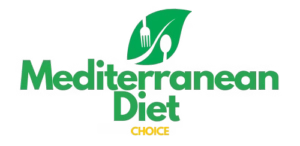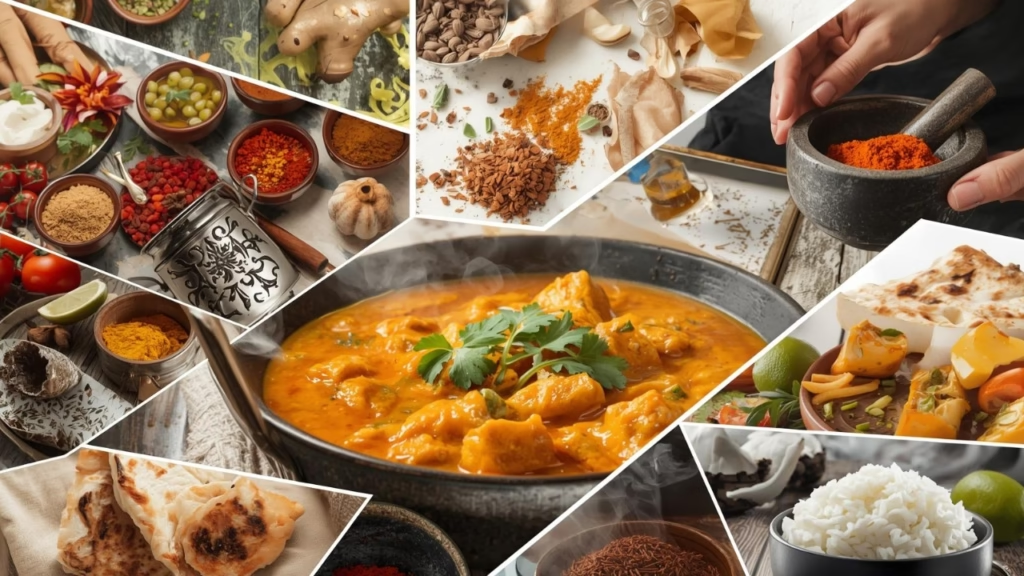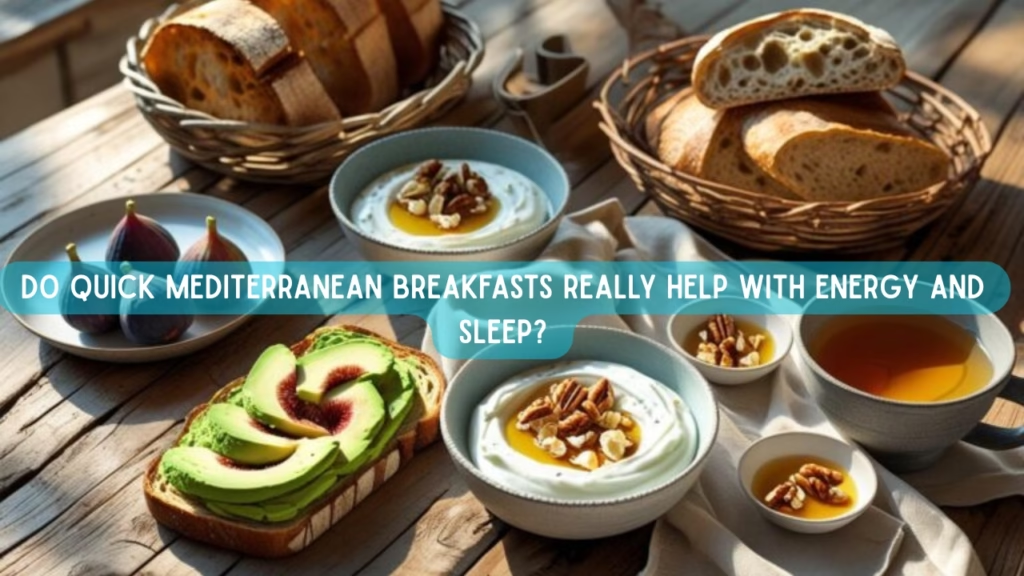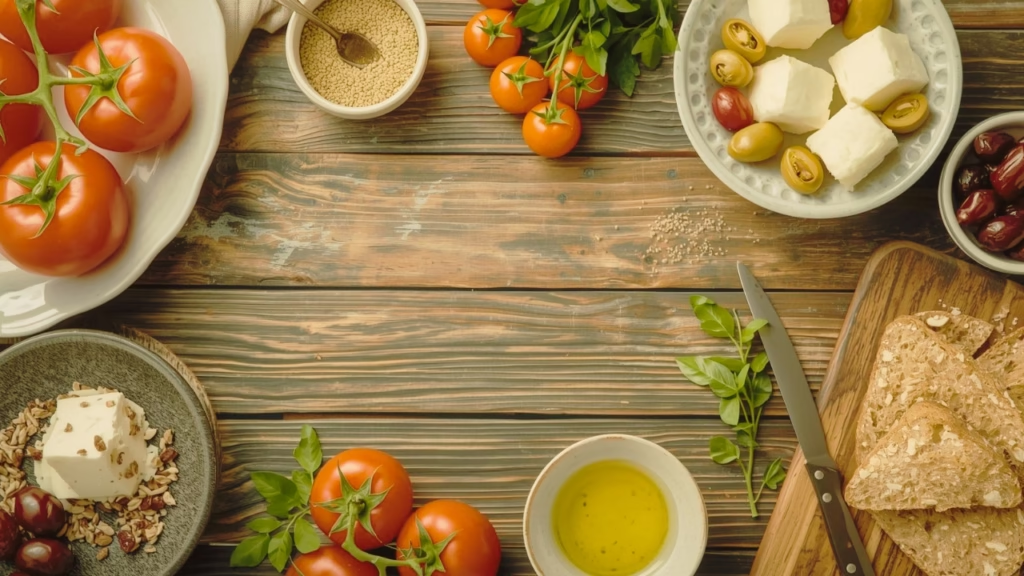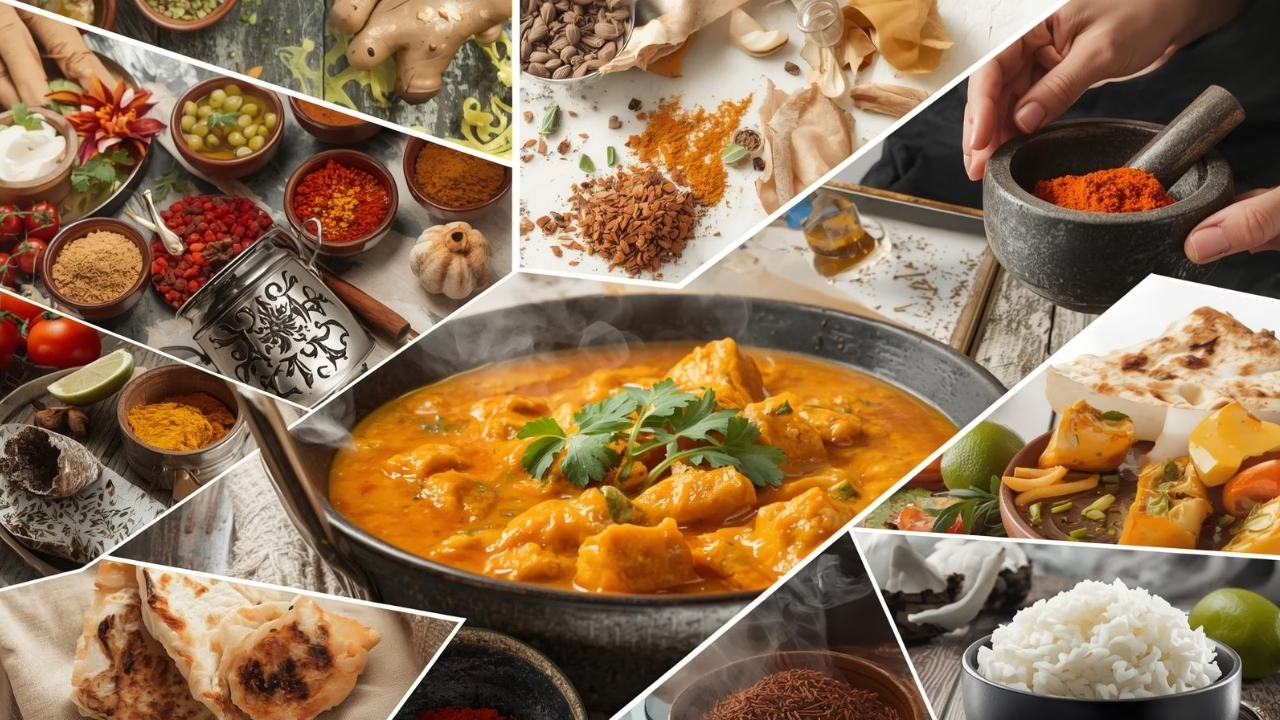
Growing up in Phuntsholing, I never imagined that the traditional Bhutanese foods my grandmother cooked would share so much common ground with a diet from the other side of the world. But when chronic fatigue started affecting my work as a teacher, I discovered something remarkable: combining Bhutanese local foods with Mediterranean diet principles transformed my energy levels in ways I never expected.
This isn’t about abandoning my cultural heritage or forcing myself to eat foods that don’t connect with my roots. It’s about recognizing that both dietary traditions celebrate whole foods, mindful eating, and ingredients that nourish rather than just fill you up.
Let me share what I learned—and what you can apply whether you’re Bhutanese, interested in fusion eating, or simply looking for sustainable energy throughout your day.
Why I Needed to Make a Change
The problem started gradually:
- Afternoon crashes that made teaching my evening classes exhausting
- Brain fog that affected my lesson planning
- Relying on multiple cups of sweet tea just to stay alert
- Weight gain despite eating what I thought were “traditional” healthy foods
I noticed I was eating more processed foods than my grandparents ever did—instant noodles, white rice instead of red rice, fewer vegetables, and way too much cheese in every meal (yes, even for Bhutanese standards).
When my doctor mentioned the Mediterranean diet during a routine checkup, I initially dismissed it. What does a European diet have to do with me? But curiosity got the better of me, and what I discovered changed everything.
The Surprising Connection Between Bhutanese and Mediterranean Eating
Here’s what shocked me: the traditional Bhutanese diet my grandparents ate shares fundamental principles with the Mediterranean approach.
Both traditions emphasize:
Whole grains as staples
- Bhutanese red rice (similar to brown rice with a nutty taste) is our traditional grain
- Buckwheat in Bumthang region mirrors Mediterranean ancient grains
- Both avoid heavily processed refined grains
Abundant vegetables
- Traditional jaju soup uses local spinach and turnip leaves
- Goen hogay cucumber salad loaded with fresh vegetables
- Mediterranean meals center around seasonal produce
Healthy fats
- Bhutanese cooking uses butter (especially yak butter)
- Mediterranean relies on olive oil
- Both traditions understand fat isn’t the enemy
Moderate meat consumption
- Traditional Bhutanese meals featured meat as flavoring, not the main event
- Mediterranean approach treats meat similarly
- Both emphasize variety in protein sources
Mindful, social eating
- Bhutanese culture celebrates communal meals
- Mediterranean traditions emphasize dining together slowly
- Neither culture historically promoted eating on-the-go
The revelation hit me: modern Bhutanese eating had drifted from our traditional ways, just as Western diets had strayed from Mediterranean traditions.
My Fusion Framework: What I Actually Changed
Morning Energy Foundation
What I used to eat:
- Instant noodles or white bread
- Sweet tea with condensed milk
- Maybe some biscuits
My fusion breakfast now:
Option 1: Red Rice Porridge Mediterranean-Style
- Bhutanese red rice (high in minerals, partially milled) cooked like oatmeal
- Topped with walnuts (instead of always using cheese)
- Fresh apple slices or dried apricots
- Drizzle of honey
- Pinch of cinnamon
Why it works: Complex carbs from red rice + healthy fats from nuts = steady energy for 4-5 hours
Option 2: Buckwheat Fusion Bowl
- Puta (buckwheat noodles) prepared simply
- Sautéed spinach with garlic
- Soft-boiled egg
- Light sesame oil (instead of heavy butter)
- Cherry tomatoes
Energy impact: No more 10 AM crash. I can teach two classes before even thinking about food.
Lunch That Actually Sustains
The old way:
- Heavy ema datshi with white rice
- Feeling sleepy by 2 PM
- Needing strong tea to stay awake
My Mediterranean-Bhutanese fusion:
Grain Bowl with Bhutanese Twist
The base:
- Bhutanese red rice or buckwheat noodles
- Portion size: one fist (not the mountain I used to eat)
The vegetables (at least half the bowl):
- Goen hogay-style cucumber salad
- Roasted radish with chilies
- Fresh cilantro and mint
- Blanched local greens
The protein:
- Grilled chicken (jasha maru-inspired but less oil)
- Or boiled eggs
- Or chickpeas when vegetarian
The healthy fats:
- Small amount of datshi cheese (not drowning in it)
- Handful of roasted peanuts or sesame seeds
- Olive oil and lemon dressing (game-changer!)
Real talk: This took adjustment. I missed the heavy cheese sauces initially. But within two weeks, I noticed I could actually focus during afternoon classes instead of fighting to keep my eyes open.
Dinner: Light but Satisfying
Transformation approach:
Instead of making ema datshi the entire meal, I rebuilt it:
New Proportions:
- ✅ Vegetables: 50% of the plate
- ✅ Whole grains: 25% of the plate
- ✅ Protein: 25% of the plate
- ✅ Cheese/fats: Flavoring, not the foundation
Favorite fusion dinner:
Jasha Maru Mediterranean-Style
- Chicken cooked with garlic, ginger, tomatoes (traditional)
- But: Less oil, more vegetables added
- Served over modest portion of red rice
- Side of fresh vegetable salad
- Smaller amount of ezay (chili paste)
What changed: I sleep better. No more heavy, sluggish feeling. Wake up actually feeling rested.
The Specific Swaps That Made the Biggest Difference
1. Red Rice Revolution
Before: White rice at every meal (easier to cook, widely available)
After: Bhutanese red rice as my primary grain
Energy impact: ⭐⭐⭐⭐⭐
- No more blood sugar rollercoaster
- Stay full much longer
- Actually tastes better (nutty, interesting)
Pro tip: Soak red rice for 30 minutes before cooking. It reduces cooking time and improves texture.
2. Cheese as Accent, Not Main Character
Before: Ema datshi swimming in cheese at lunch and dinner
After: Small amounts of datshi for flavor, not the base
Why this mattered:
- Less afternoon sluggishness
- Better digestion
- Still get the flavors I love
- Save money (cheese is expensive!)
Mediterranean principle applied: Use strong-flavored ingredients sparingly to enhance, not dominate
3. Vegetable Abundance
Before: Vegetables were an afterthought, if present at all
After: Vegetables fill half my plate at every meal
Bhutanese vegetables I emphasized:
- Local spinach and turnip leaves (like in jaju soup)
- Radish (common in traditional cooking)
- Bitter melon (acquired taste but so nutritious)
- Cucumbers (goen hogay-style)
- Whatever’s seasonal at the market
Energy result: More consistent throughout the day. Less hungry between meals.
4. Fat Quality Over Quantity
Before: Heavy butter in everything (the traditional way, but maybe too much)
After: Strategic fat choices
My fusion approach:
- Olive oil for salad dressings (Mediterranean)
- Small amount of butter for flavor in cooked dishes (Bhutanese)
- Nuts and seeds for snacking
- Reduced overall fat but better quality
Unexpected benefit: My skin improved. Seriously. Less breakouts, more glow.
5. Buckwheat Becomes a Staple
Before: Rarely ate buckwheat dishes like puta or hoentay (seemed old-fashioned)
After: Buckwheat 3-4 times per week
Why buckwheat is perfect for this fusion:
- Naturally gluten-free
- High in protein and fiber
- Cooks quickly
- Works with both Bhutanese and Mediterranean flavors
- Incredibly filling
My favorite quick meal:
- Puta (buckwheat noodles) stir-fried
- Lots of vegetables
- Light sauce (soy sauce + lemon juice + garlic)
- Topped with sesame seeds
- Takes 15 minutes total
Weekly Meal Structure That Actually Works
Monday – Friday (Teaching Days)
Breakfast:
- Red rice porridge or buckwheat dish
- Fruit
- Nuts
- Preparation time: 10-15 minutes
Lunch:
- Grain bowl (batch-cooked grains on Sunday)
- Fresh vegetables
- Protein
- Preparation time: 5 minutes (using prep)
Dinner:
- Traditional Bhutanese dish, Mediterranean proportions
- Always includes salad
- Moderate portions
- Cooking time: 30 minutes
Weekend (Flexibility)
Saturday:
- Traditional family meals
- I don’t stress about perfect proportions
- Enjoy ema datshi if that’s what’s served
- Focus on eating slowly and socially
Sunday:
- Meal prep day
- Cook large batch of red rice
- Prepare vegetables
- Make some fusion dishes to experiment
The Energy Transformation Timeline
Week 1-2: The Adjustment
- Honestly? I was hungry more often initially
- My body was used to heavy, cheese-laden meals
- Had to eat more frequently but lighter
- Energy was inconsistent
Week 3-4: The Shift
- Afternoon crashes reduced by about 50%
- Started sleeping better
- Less bloated feeling
- Beginning to crave vegetables (weird but true)
Week 6-8: The Breakthrough
- Energy levels stabilized completely
- No more afternoon slumps
- Mental clarity improved dramatically
- Students commented I seemed more energetic
- Lost some weight without trying
Month 3+: The New Normal
- This became effortless
- Body craves whole foods now
- Can’t imagine going back to heavy lunches
- Feel 10 years younger (I’m only 34!)
- Athletic performance improved (I hike regularly)
What I Learned About Traditional Bhutanese Wisdom
The biggest revelation: Our traditional diet was already incredibly healthy. Modern convenience foods and excessive portions corrupted it.
What my grandparents did right:
✅ Red rice, not white rice
- Grown in Paro Valley’s fertile soil with mineral-rich glacier water
- Only partially milled, keeping nutrients
- They knew this was superior
✅ Buckwheat in colder regions
- Bumthang’s buckwheat tradition reflects intelligent local adaptation
- High altitude, short growing season
- Buckwheat thrives where other grains struggle
✅ Preserved foods for nutrition
- Dried beef and yak meat weren’t just preservation
- Concentrated nutrients for harsh winters
- Moderate portions—flavoring, not main course
✅ Vegetable variety
- Bitter melon, local spinach, turnip leaves
- Seasonal eating by necessity
- Nothing wasted (zow shungo uses leftovers)
✅ Fermented foods
- Cheese making, preserved vegetables
- Gut health before anyone talked about probiotics
- Natural food preservation
What got lost: Portion control and the balance between elements. Modern Bhutanese eating often emphasizes the cheese and meat while reducing vegetables and whole grains.
Practical Tips for Other Bhutanese (or Anyone Interested)
If You’re in Bhutan:
Start here:
- Switch back to red rice (it’s our heritage!)
- Reduce cheese portions by half
- Add a fresh salad to every meal
- Rediscover buckwheat dishes like puta and hoentay
Shop smart:
- Local markets for seasonal vegetables (cheaper and fresher)
- Buy red rice in bulk
- Reduce instant noodle purchases
- Invest in good olive oil (one bottle lasts months)
Keep these traditions:
- Eating with family
- Taking time with meals
- Seasonal eating
- Food as medicine philosophy
If You’re Outside Bhutan:
Finding ingredients:
- Red rice: Look for “Bhutanese red rice” or substitute brown rice
- Buckwheat: Health food stores carry buckwheat noodles and flour
- Ema datshi alternative: Use any good cheese with lots of vegetables
- Asian markets often have similar ingredients
Adapt the principles:
- Whole grains from your tradition
- Local seasonal vegetables
- Moderate protein
- Healthy fats
- Social, mindful eating
The Mindset Shift That Mattered Most
Old thinking: “I need to eat a lot to have energy”
New understanding: “I need to eat right to have energy”
What “eating right” means in practice:
Quality over quantity:
- One cup of red rice > two cups of white rice
- Small amount of good cheese > large amount mediocre cheese
- Fresh vegetables > pickled everything
Timing matters:
- Heavier meals earlier in the day
- Lighter dinners
- No heavy cheese sauces before bed
Preparation creates success:
- Sunday meal prep saves weekday stress
- Cooked grains ready to go
- Vegetables washed and prepped
- No excuses for bad choices
Social eating is sacred:
- Eat with family when possible
- Turn off phone during meals
- Chew slowly
- Actually taste your food
Flexibility, not perfection:
- If family serves traditional heavy meal, enjoy it
- One meal doesn’t ruin everything
- Focus on overall pattern
- Cultural foods are important—just balance them
Unexpected Benefits Beyond Energy
What else improved:
Mental clarity:
- Lesson planning became easier
- Better focus during classes
- More creative thinking
- Less brain fog
Physical changes:
- Lost 8 kg without trying
- Better sleep quality
- Clearer skin
- Improved digestion
- More stamina hiking
Financial impact:
- Actually saving money
- Less cheese consumption (expensive)
- Fewer processed snacks
- More vegetables (cheaper)
- Less eating out
Emotional wellbeing:
- Feel more connected to traditional foods
- Pride in Bhutanese ingredients
- Confidence from feeling good
- Less anxiety about health
Social connections:
- Started teaching friends this approach
- Family interested in trying it
- Students ask for advice
- Feel like I’m preserving traditions while adapting
Common Questions My Friends Ask
“Isn’t this just abandoning Bhutanese food?”
No! It’s returning to how our grandparents ate while applying Mediterranean principles of balance. I eat MORE traditional Bhutanese foods now (red rice, buckwheat) than when I ate instant noodles and white rice.
“Can I still eat ema datshi?”
Absolutely! I eat it weekly. Just not as the entire meal, and not drowning in cheese. Balance it with vegetables and whole grains.
“Isn’t olive oil expensive and foreign?”
One bottle lasts months. Yes, it’s not traditional Bhutanese, but neither are instant noodles or processed foods we eat now. I use both olive oil and traditional butter—just more thoughtfully.
“Do you ever eat regular meals?”
Every weekend with family, I eat whatever’s served. Festivals, celebrations, religious occasions—I participate fully. This approach is about daily patterns, not rigid rules.
“How long does meal prep take?”
Sunday afternoon, 2-3 hours:
- Cook large batch of red rice (30 minutes)
- Wash and chop vegetables (45 minutes)
- Prepare a grain salad for the week (30 minutes)
- Make some buckwheat dishes (45 minutes)
This saves 30-45 minutes every weekday.
“What about when traveling?”
I focus on these principles:
- Choose red rice when available
- Always order vegetables
- Moderate portions
- Skip heavy cheese dishes except occasionally
- Walk everywhere possible
The Recipe That Changed Everything
My Mediterranean-Bhutanese Power Bowl
This single meal encapsulates everything I learned:
Base layer:
- 3/4 cup cooked Bhutanese red rice
- Or 1 cup buckwheat noodles
Vegetable foundation (biggest portion):
- Cucumber salad (goen hogay-style)
- Roasted radish with chilies
- Fresh spinach or turnip greens
- Cherry tomatoes
- Fresh cilantro and mint
Protein:
- Grilled chicken (jasha maru seasoning)
- Or boiled eggs (2-3)
- Or chickpeas (1/2 cup)
Healthy fats:
- 1 tablespoon olive oil
- 1 tablespoon datshi cheese (crumbled)
- Handful of roasted peanuts or sesame seeds
Flavor boost:
- Fresh lemon juice
- Garlic (lots!)
- Ginger (fresh grated)
- Small amount of ezay if you want heat
Assembly:
- Warm the grains
- Arrange vegetables taking up most of the bowl
- Add protein
- Sprinkle cheese and nuts
- Drizzle olive oil and lemon
- Add fresh herbs
Time: 5 minutes if using prepped ingredients Energy sustained: 5-6 hours Satisfaction level: 10/10
Final Thoughts: Honor Your Roots, Enhance Your Health
Combining Bhutanese local foods with Mediterranean diet principles taught me something profound: traditional wisdom from different cultures often arrives at similar truths through different paths.
Both approaches understand that food is medicine, that eating should be pleasurable and social, that whole foods nourish while processed foods merely fill, and that our ancestors knew things about nutrition that modern science is only now confirming.
You don’t have to choose between cultural identity and health. You can honor your heritage while making choices that serve your wellbeing.
For my Bhutanese friends: Our traditional foods—red rice, buckwheat, local vegetables, moderate portions—were already excellent. We just need to rediscover them and resist the modern processed food invasion.
For everyone else: These principles apply regardless of cultural background. Find the whole foods in your tradition, emphasize vegetables, choose quality fats, eat socially and mindfully, and move your body regularly.
The Mediterranean diet isn’t about eating Italian or Greek food. It’s about principles that any culture can adapt using their own ingredients.
The energy I have now—stable, consistent, abundant—comes from giving my body what it actually needs rather than what advertisements tell me I want.
That’s a lesson worth sharing, whether you’re from Bhutan, the Mediterranean, or anywhere else in the world.
Tashi Delek (Good Fortune),
Written and Edited by: Ms. Dorji Chozom
A teacher in Phuntsholing who finally stopped fighting afternoon naps
Factual Elements Based on Research:
We carefully draw from trusted, evidence-backed sources to ensure our content’s accuracy and reliability.
How To Follow a Mediterranean Diet-Cleveland clinic
Traditional dishes like ema datshi (cheese and chilies), jasha maru (chicken stew), puta (buckwheat noodles), and goen hogay (cucumber salad) are authentic Cleveland ClinicCleveland Clinic
Buckwheat is especially popular in Bumthang region Cleveland Clinic
Traditional Bhutanese eating emphasizes red rice, vegetables, moderate meat, and communal dining Cleveland Clinic

Hello! I’m Sangay Choda, the creator of Mediterranean Diet Choice.
I’m not a doctor or licensed dietitian — I’m a health enthusiast who has spent years exploring the Mediterranean lifestyle and its proven benefits for long-term wellness, balance, and longevity.
My interest in this way of living began with a simple goal: to understand how everyday food choices can protect our hearts, improve energy, and support a happier life. Over time, I have researched and curated information from trusted medical and nutritional authorities, such as:
Harvard T.H. Chan School of Public Health
Mayo Clinic
World Health Organization (WHO)
National Institutes of Health (NIH) and more
I take complex, research-backed insights from these sources and transform them into easy-to-read, practical guides that anyone can apply — especially those looking to live healthier without restrictive diets or complicated plans.
While I do not offer medical advice, every article on this website is created with care, transparency, and a commitment to evidence-based information. My mission is to help readers make informed choices for a balanced, Mediterranean-inspired lifestyle.
Disclaimer: The content on this site is for informational and educational purposes only and should not be used as a substitute for professional medical advice. Always consult a qualified healthcare provider before making significant health or dietary changes. For more details, please visit our Disclaimer page.
For additional information about this website and its purpose, visit our About page. You can also review our Terms & Conditions to understand your rights and responsibilities when using this site.
Thank you for visiting Mediterranean Diet Choice.If you have questions, suggestions, or wish to collaborate, feel free to reach out at contact@mdietchoice.com or contact us.
